7 ways to draft-proof an entryway – keeping your home cozy and energy costs low
DIY tips to insulate your entryway to prevent drafts

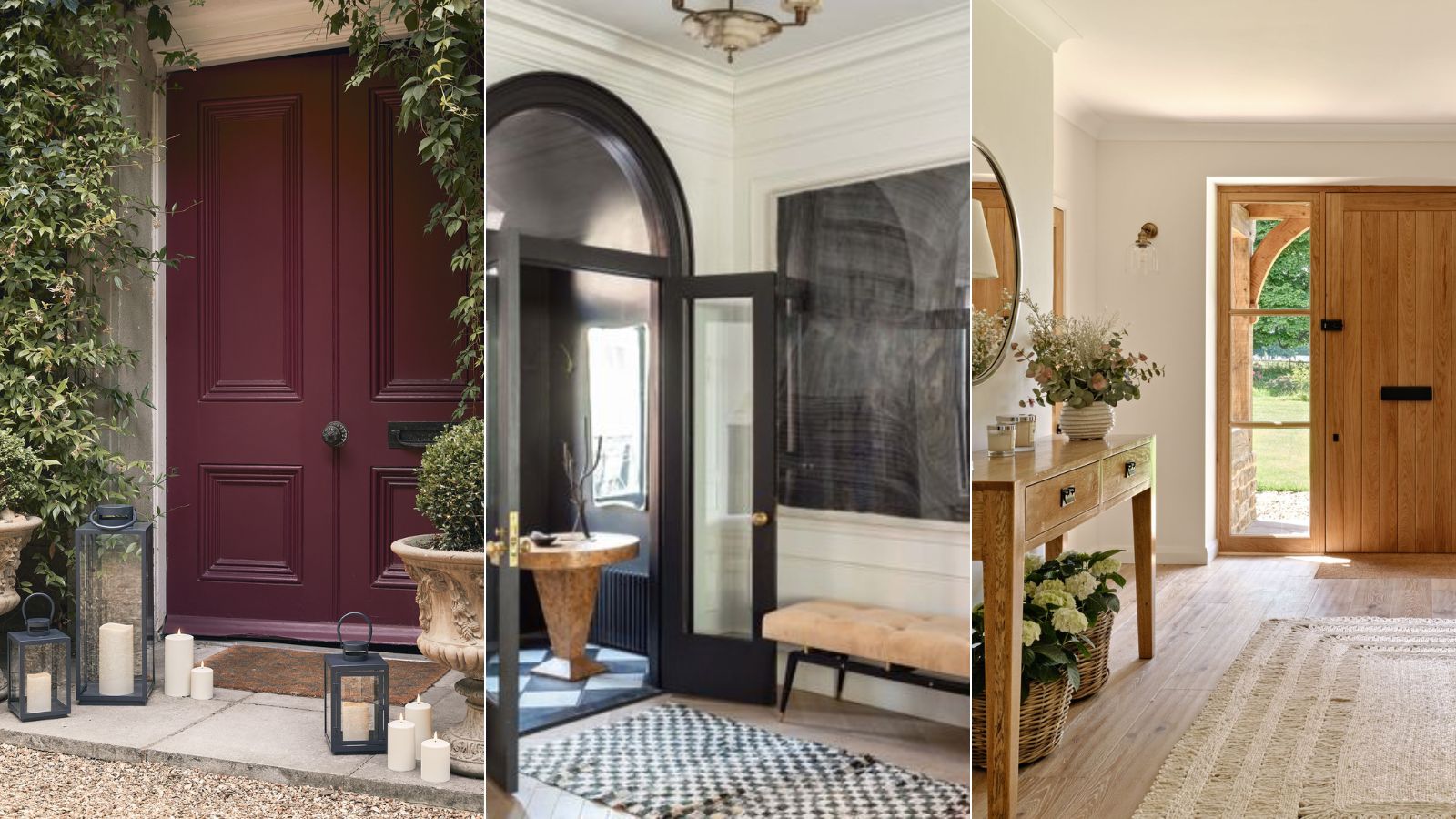
Drafty entryways can make your whole house feel cold and less welcoming – not to mention leading to increased energy bills – which is why it's important to draft-proof your entryway to give you control of your home's temperature.
With fall in full swing and winter approaching, homeowners are finding it more difficult to keep their homes cozy without cranking up the temperature. The first step for keeping homes warmer is to draft-proof your entryway.
From identifying areas that allow drafts into your entryway, to the best methods for insulation and draft prevention, these expert tips can help you to create a cozier and more energy-efficient living space.
How to draft-proof an entryway
Draft-proofing your entryway involves some DIY methods for ensuring your entryway is sealed and insulated to keep your home warm, and transform the atmosphere of your entryway.
1. Check for gaps and cracks
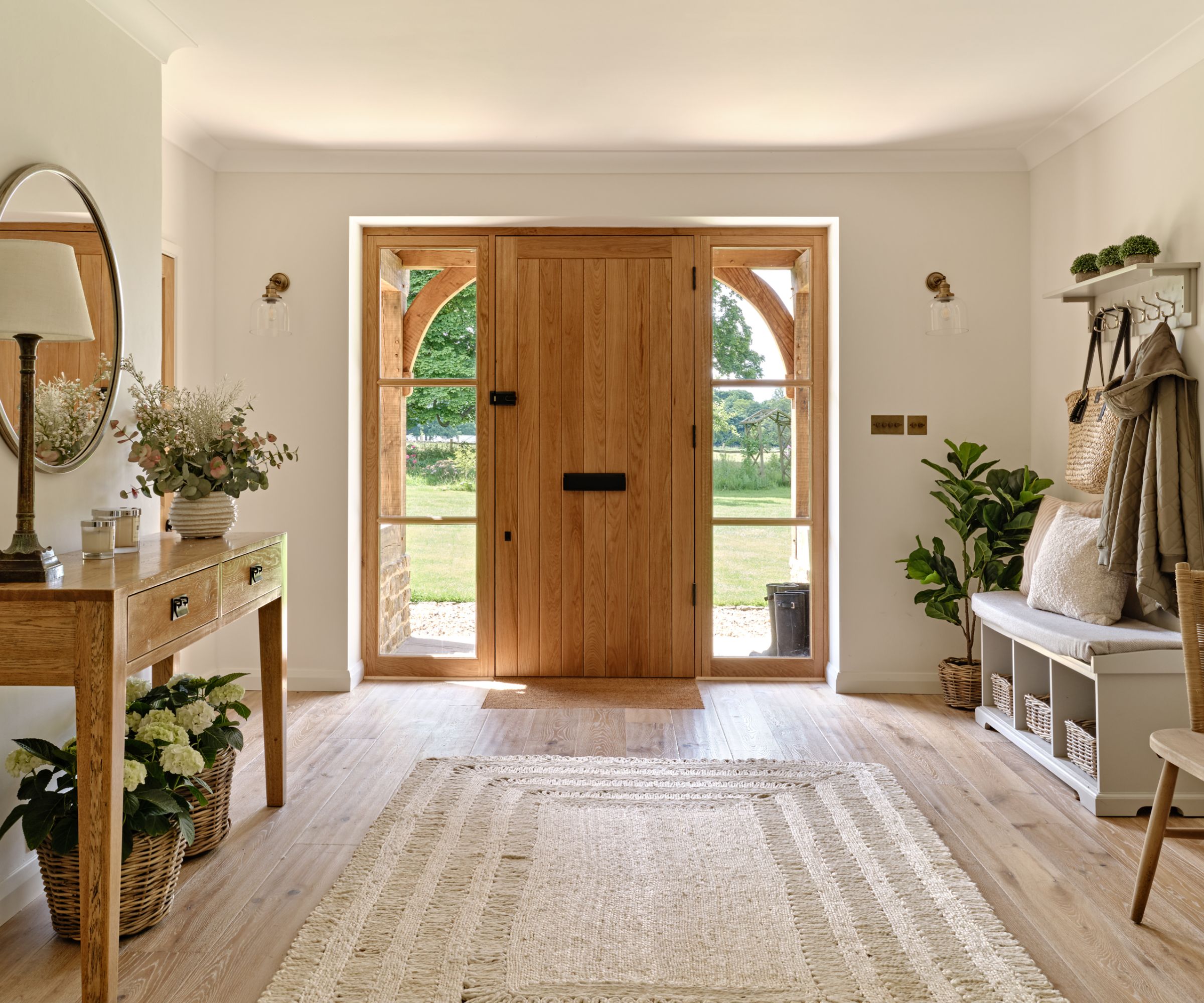
Inspect your entryway to identify areas where drafts may be entering. 'Examine the door, the door frame, and adjacent walls for any visible gaps or cracks,' advises Mohammed Ahmed, interior designer and founder of The Home Guidance. 'On a chilly day, move your hand slowly around the door's perimeter. If you feel cold air, there's a draft.'
Another method can be to hold a candle or a smoke stick near potential draft areas on windy days. In areas where the flame moves, this will indicate where you have a draft.

Mohammad Ahmed is an interior designer. He completed his bachelor's degree in interior design at the University of Minnesota in 2013 and since then has worked as an interior designer in various companies, designing functional and beautiful spaces for clients. In addition to his interior and exterior design skills, Mohammad is also Home expert with a talent for creating bespoke furniture and other accessories.
2. Cover draft points in your front door
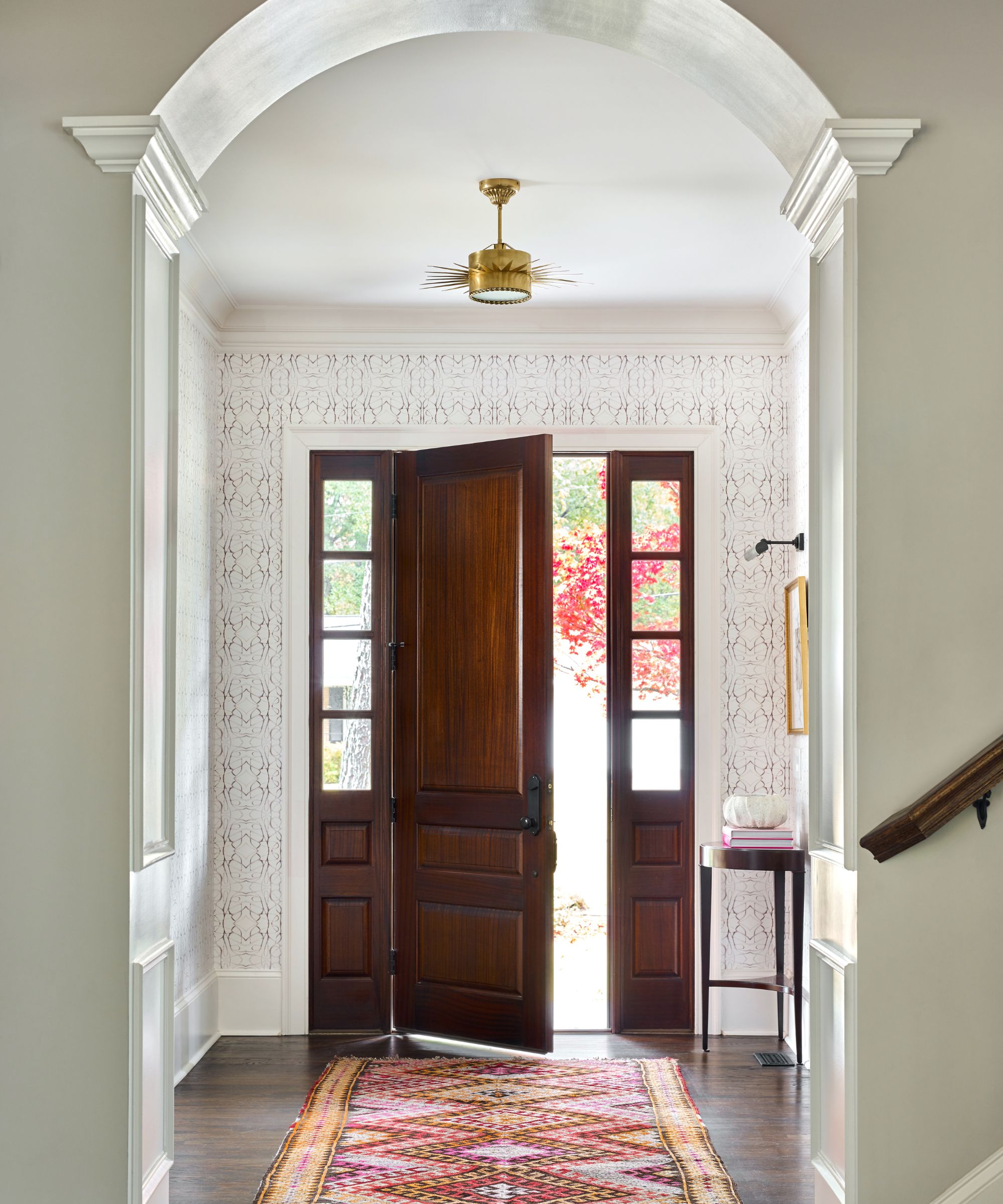
'The keyhole is a pesky cause of drafts. Most modern locks come with keyhole cover guards, but if yours is missing one, you can fit it with an escutcheon,' explains Ivo Iv, the founder and CEO of Decor Home Ideas. 'This metal disc prevents drafts and slides out of the way if you want to use the keyhole.' You can find an escutcheon that matches your door hardware at Amazon.
Design expertise in your inbox – from inspiring decorating ideas and beautiful celebrity homes to practical gardening advice and shopping round-ups.
Another draft-prone spot to check is the alignment of the latches and hinges on your front door. Parts that aren't properly aligned can leave gaps, allowing drafts in. Modify or swap out those that need realigning to fix your drafty door.
'Lastly, you have to take care of the letterbox,' suggests Ivo Iv. 'Draft-proofing this part of the door can be challenging since installing a brush or flap makes it difficult to pop letters through. The trick here is to measure the letterbox precisely into size before installing the flaps. Alternatively, you can opt for newer model letterboxes that can already be fitted with brushes and flaps.
'If push comes to shove, you can remove the letterbox altogether, seal the gap, and then mount an external letterbox on one side of your front door.' Don't forget to check around and draft-proof pet doors, too.
Luckily, there are some smart ways to draft-roof doors without ugly strips if maintaining aesthetics is a top priority.
3. Weatherstripping for doors
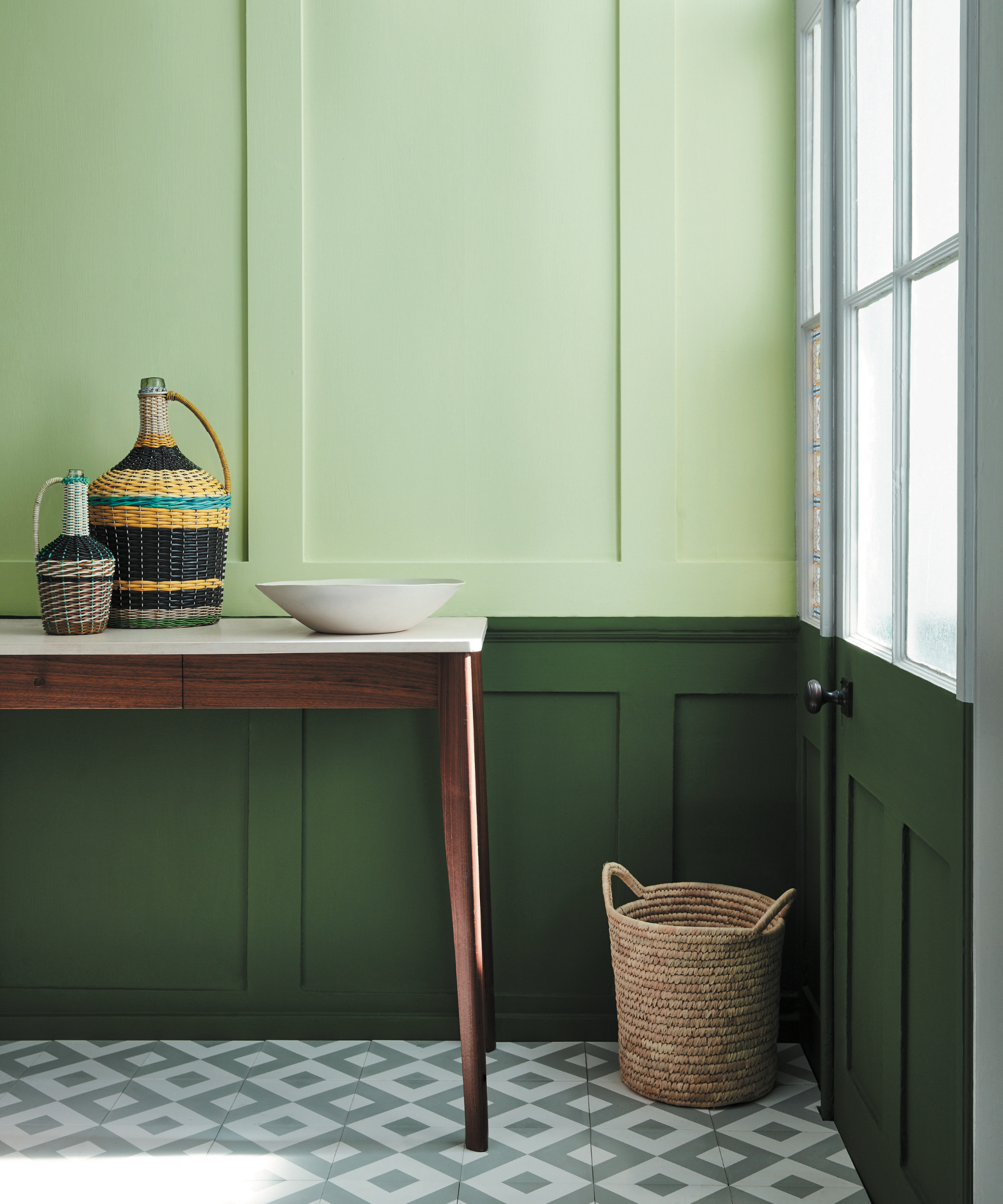
'Weatherstripping is a cost-effective way to seal gaps around doors and windows. There are different types of weatherstripping materials, including adhesive foam tape, V-strip, and door sweeps,' explains Dave Roebel of Northeast Mechanical Services. 'Choose the one that best fits your needs.
Depending on your door type, you might opt for adhesive-backed V-strip, at Amazon, door sweeps, or foam tape. Clean the surface thoroughly before applying and measure and cut the strips to fit your door frame.
'Apply adhesive foam tape to the door frame. Install V-strip on the sides of the door jamb. Attach a door sweep to the bottom of the door to seal the gap between the door and the threshold,' explains Dave Roebel.
'Opt for bronze or brass weatherstripping. Not only are they durable, but they also add a touch of elegance to your door.' We recommend this 100ft bronze weatherstripping, from Amazon.
Head of Solved, Punteha van Terheyden found weatherstripping was a quick and easy fix for her drafty front door.
You can also apply weatherstripping tape or foam strips to seal gaps around entryway windows. This will close the airtight seal between the door and the floor, keeping the heat inside and the drafts outside.
'Beyond the usual weatherstripping, seek out aesthetic door sweeps and draft stoppers which blend seamlessly with your decor,' says Artem Kropovinsky, interior designer and founder of Arsight.
'These are attached to the bottom of the door and block the gap between the door and the threshold,' explains Mohammad Ahmed. 'Look for door sweeps or draught excluders that match or complement your door's color or material.'

Based in New York, Artem Kropovinsky, founder of Arsight, has a decade of extensive and considerable global design experience. Prioritizing minimalism, sustainability, and authenticity, Artem, alongside his team of professionals, works on projects in the US and worldwide.
4. Re-caulk the exterior
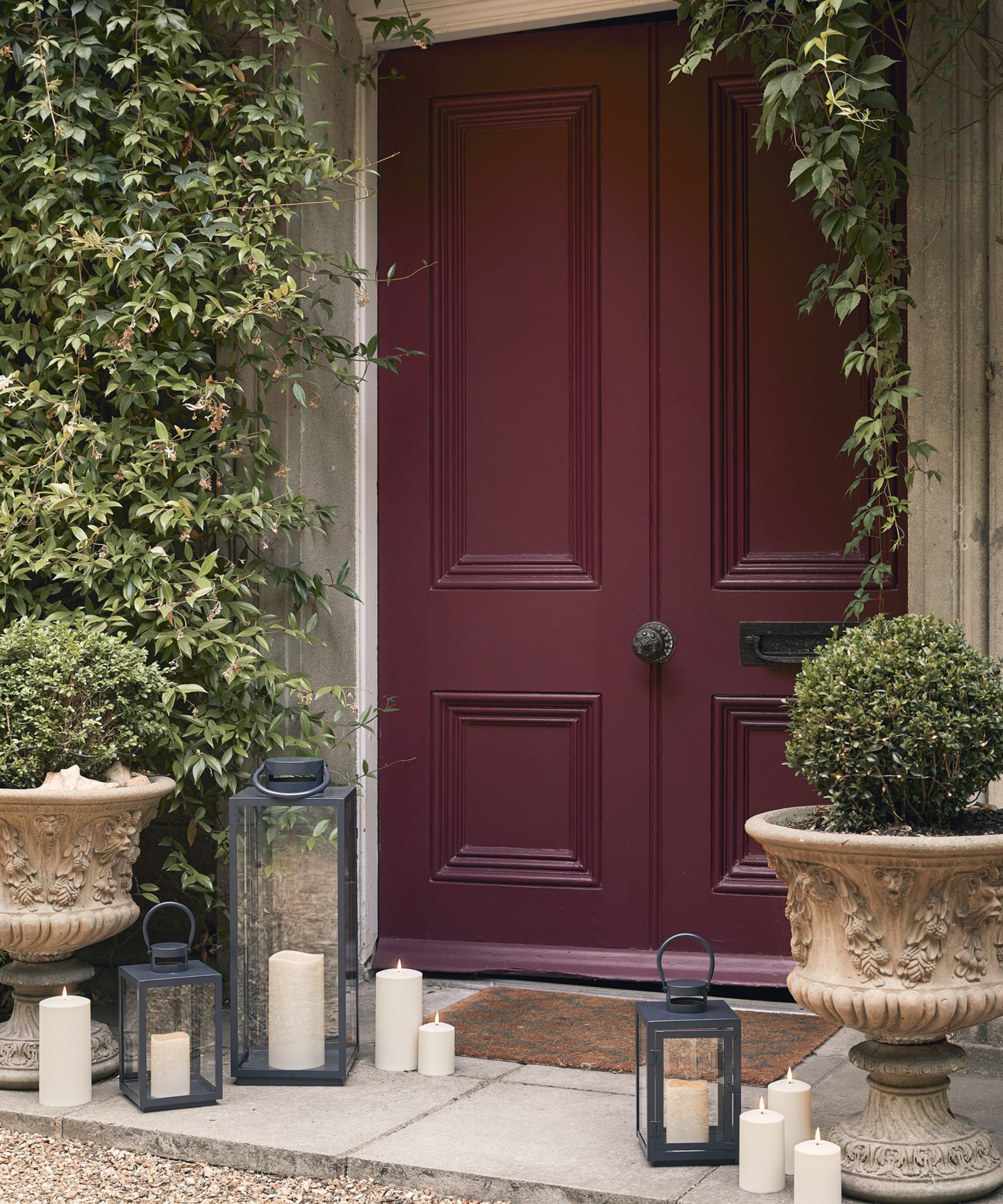
Use a caulk gun and flexible caulk to seal any visible gaps or cracks around your door. Be sure to pay special attention to corners and edges, as these are common areas where drafts sneak in. Silicone caulk is often a good choice for this purpose.
Re-caulking around the door frame on the exterior can prevent drafts and moisture, as well as enhancing the overall cleanliness of your entryway by keeping dust and pests out.
'For a polished look, ensure the caulk color matches the door frame or is clear,' advises Mohammed Ahmed.
5. Insulate windows

'If you have windows in or near the entryway, make sure they are properly sealed as well. Aside from weatherstripping window edges, you can also apply clear plastic film over the windows to provide an additional layer of insulation,' advises Dave Roebel.
We recommend this magnetic window insulation kit, from Amazon, for simple removal and application.
5. Put up heavy duty curtains

In particularly drafty entryways, heavy curtains can be a game-changer. You can install a curtain rod above your door with ample space either side of the door to pull the curtain aside so it doesn't make the door more difficult to open.
Artem Kropovinsky says, 'Weightier curtains or draperies can function as an attractive barrier against drafts, giving a dual purpose of aesthetics and practicality.' We love these cotton velvet curtains from West Elm.
Keep these curtains closed whenever it is convenient as well as overnight to prevent drafts from your doorway making your entryway cold.
6. Upgrade or replace the door
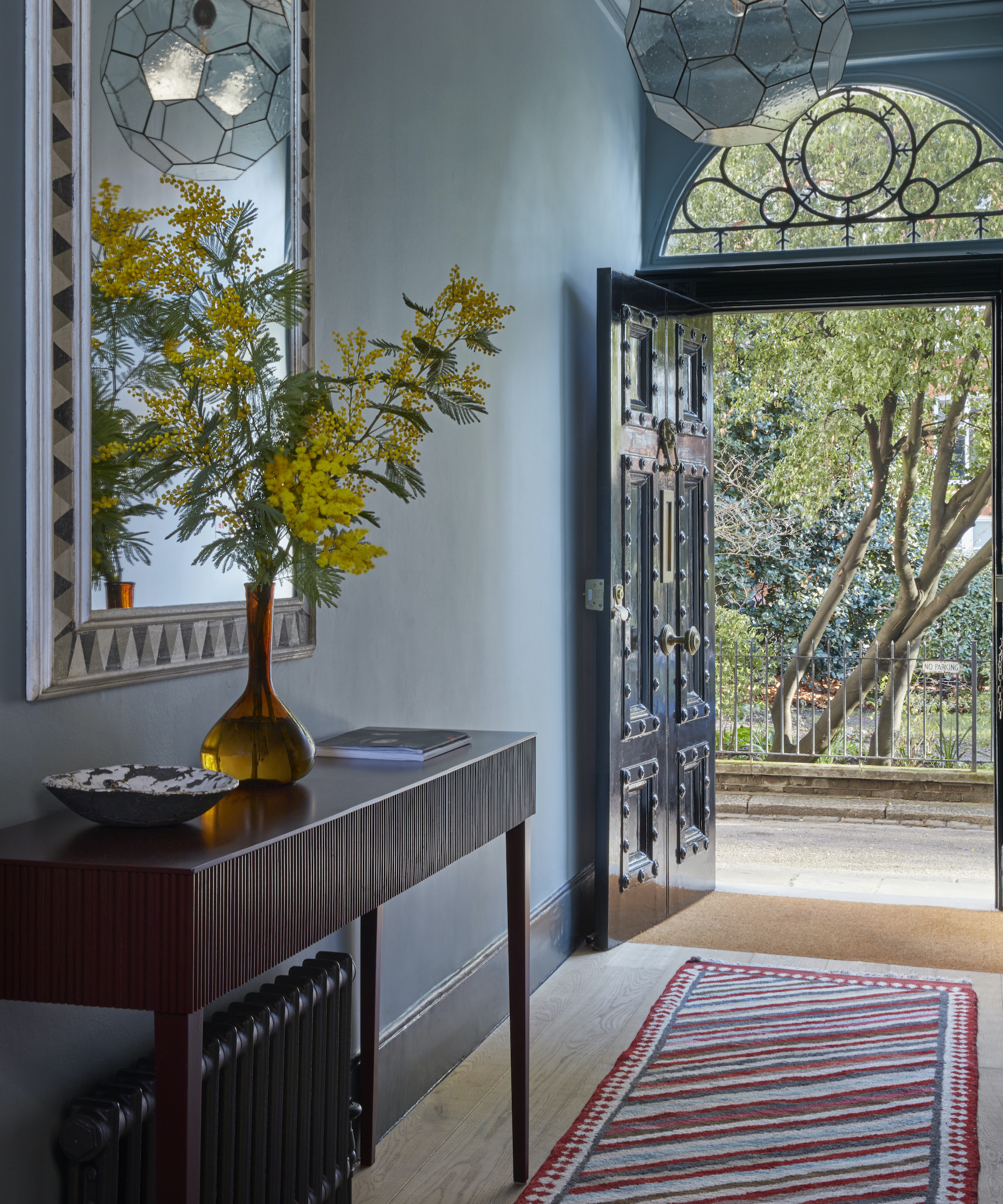
'If your door is old, warped, or has a thin core, it might be time to replace it. Consider a solid core door or one with insulating properties,' advises Mohammed Ahmed. 'These doors are not only energy efficient but can also be a design statement with the right finish and hardware.
'Storm doors and windows add an extra layer of insulation and protection. They can significantly reduce drafts and enhance energy efficiency.'
7. Consider floor materials

The flooring and materials used in your entryway can be transformational in preventing drafts. Heating beneath stone, wood or tile floors can eliminate cold spots and make your entryway warm and inviting.
Alternatively, installing carpets on your entryway floor will reduce drafts and make it warmer underfoot. Carpets have low thermal conductivity, keeping heat in the room and preventing drafts.
Artem Kropovinsky also recommends entryway rugs and floor runners, especially those made from thick wool or layered fabrics, which can prevent the cold from seeping through and help retain warmth.
FAQs
What is one discrete place drafts in your entryway come from?
One lesser-known place drafts can enter your entryway is through electrical outlets near the entryway. To prevent this from being an issue, you can install foam gaskets or insulating covers to seal these gaps.
Remember to regularly assess your entryway for drafts and perform maintenance where needed. Over time, weatherstripping can wear out, and caulk can crack, so it's important to replace or repair them.
Next, delve into our expert guide on how to draft proof your living room.

Lola Houlton is a news writer for Homes & Gardens. She has been writing content for Future PLC for the past six years, in particular Homes & Gardens, Real Homes and GardeningEtc. She writes on a broad range of subjects, including practical household advice, recipe articles, and product reviews, working closely with experts in their fields to cover everything from heating to home organization through to house plants. Lola is a graduate, who completed her degree in Psychology at the University of Sussex. She has also spent some time working at the BBC.